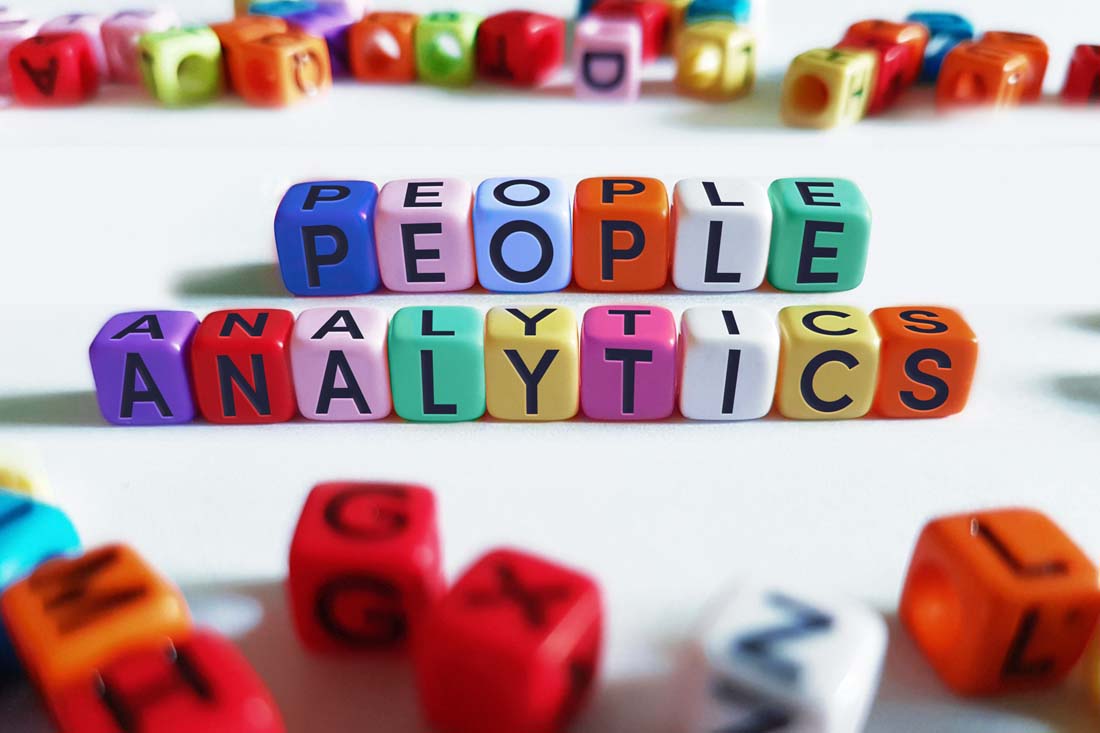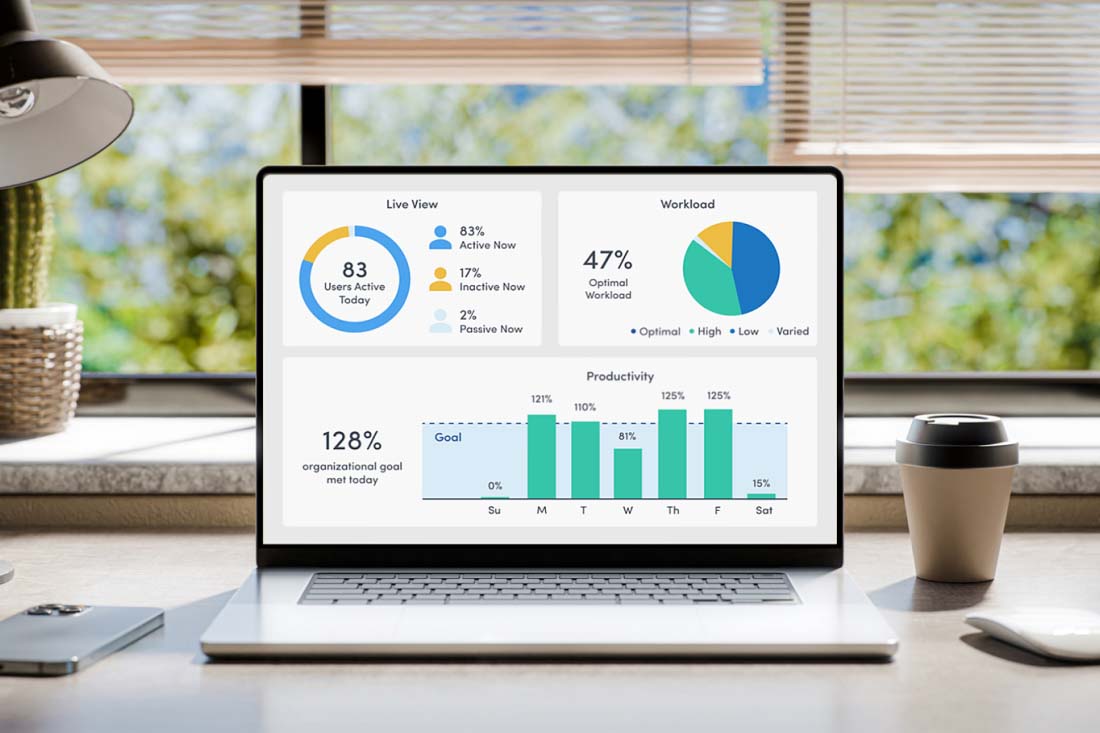A company’s workforce is one of its most valuable assets, and to stay competitive, people analytics is becoming increasingly important. Also known as HR analytics or workforce analytics, people analytics is the process of extracting insights from HR data to make informed decisions and drive strategic business outcomes. In this post, we’ll discuss the concept and history of people analytics, its significance in business and its role in employee engagement.
What is people analytics?
People analytics is the use of data and statistical methods to gain insights into various aspects of an organization’s workforce. This means collecting and analyzing data related to employee demographics, performance, engagement and more. By using people analytics, companies are empowered to make data-driven decisions that increase productivity, reduce employee turnover and improve overall business performance.
One of the most important aspects of people analytics is that it gives HR professionals and business leaders insights into the factors influencing employee behavior and performance. By looking at data on employee demographics (age, gender, educational background, etc.), organizations better understand the composition of their workforce, leading to better strategies for HR and the organization as a whole.
Analyzing performance metrics like sales figures, project completion rates and customer satisfaction scores shows where the organization can improve and identify top performers for recognition or to model training after it. Raw numbers only give part of the picture of these aspects of your business, but with people analytics, leadership and HR teams get a more holistic view of how HR-related issues impact your bottom line, which means more informed decisions and strategies.
How has people analytics evolved?
Human resources has been an organizational consideration since the early 20th century, but people management has evolved significantly in the past decades. Before the recent technological boom, HR leaders relied on their intuition and previous experience to make decisions about the future. Most HR actions were based around managing people – whether through disciplinary actions, conducting orientation, hiring and firing or employee resignations.
After the financial crisis of 2008, larger organizations started taking a more proactive approach to their HR systems, especially as new technologies allowed them to track HR metrics in innovative ways. With the rise of “Big Data,” big tech companies could apply predictive workforce analytics to their human resources systems, leading to more in-depth and strategic workforce planning. Organizations started to use data analysis to create longer-term models and strategic plans to pivot with changing economic conditions.
As the business world moved firmly into the 21st century and smaller organizations began to leverage people data, world events forced people analytics onto the big stage. The COVID-19 pandemic drove organizations of all sizes to rethink how they handled performance management, with most knowledge-based workers forced to work from home. Managers could no longer assess their workforce from simply being in the office, leading to the need for more advanced hybrid and remote workforce management software.
This era also brought to light issues like burnout and psychological balance in the working environment. Finding actionable insights to create a better employee experience has become an important aspect of competitiveness in talent acquisition and employee retention programs. Political movements in the U.S. have also made companies pay more attention to diversity, equity and inclusion (DEI) programs. Data analytics now plays an important role in workforce management and strategic planning for HR, and there’s potential for people analytics to create even more revenue for companies and benefits for employees as it progresses. Today, you can look to leading brands for examples of people analytics increasing organizational effectiveness and maintaining a competitive advantage.
The importance of people analytics in business
People analytics has many benefits for businesses and helps them in areas like:
- Decision-making: Rather than relying on intuition or experience, today’s businesses and HR managers rely on factual data to make decisions about HR programs. For instance, data from productivity management software shows how employees use new technologies or tools in real time, empowering managers to quickly determine if teams need more training or support.
- Talent acquisition and retention: Low acceptance rates and high employee turnover are signs of deeper problems, and people analytics data gives leaders deeper insight into employee engagement, experience and expectations than employee surveys or self-reporting. At the same time, people analytics fights unintentional bias in hiring with data, leading to more robust and successful DEI programs.
- Workforce performance – High-powered companies use people analytics to drill down into employee productivity, not just identifying high performers but defining their behavior to create models for other employees or training programs. Managers see which employees are overworked or underutilized and HR leaders are empowered to create processes to prevent burnout and maximize productivity while encouraging work-life balance.
While each of these contributes to more effective HR processes, they all contribute to innovation, workload balance and operational efficiency. The organization benefits from people analytics with a more functional bottom line today and effective planning for flexibility in the future.
We’ll discuss specific ways people analytics helps businesses in the section below.
7 ways people analytics helps businesses thrive
With informed decision-making from people analytics, HR leaders and the C-suite are equipped to strategically align processes and programs to create value in HR for the present and the future. Infusing people analytics into an organization creates benefits for the business in the following specific ways:
1. Better hiring
Understanding how effective employees function in your organization gives you insight into what characteristics new employees will need to succeed. See what skills or programs are missing from your current workforce and proactively fill in the gaps with the right candidates. At the same time, data on acceptance rates and time-to-hire rates keeps you competitive in changing markets.
2. Improved retention
When employees leave a job, they take valuable knowledge and productivity with them. People analytics empowers organizations to increase retention by keeping a pulse on employees and identifying those with signs of low engagement, attrition or burnout. Managers can then proactively address these cases before they can result in turnover.
3. Better employee productivity
Real-time data on employee productivity shows managers what factors are helping or hindering productivity. Managers can leverage data to support individual employees through personalized strategies or implement changes to increase team productivity.
4. Data-based goals
People analytics improves goalsetting by providing data on past performance and current metrics to measure performance over time. Good data and analytics pave the way for better goals based on expected outcomes, with the ability to tweak them on the fly using real-time insights if things change.
5. Informed talent and development
Beyond hiring new talent to fill in the gaps, people data shows where employees may need more training. For example, an employee who’s consistently taking longer than others to do a certain process or who provides lower-quality deliverables of a specific type may need additional training in that area of their role. On the other hand, people analytics also reveals which employees have mastered the skills for their role and are ready for a promotion or development in other areas.
6. Improved security and compliance
People analytics provides instant visibility into activities that could lead to a security risk, data breach or compliance issue. By getting notified in real time, managers and IT professionals can immediately address the situation and correct the behavior before it can lead to serious issues.
7. Improved employee satisfaction
Using people analytics, HR teams can see what factors contribute to employee satisfaction and where the organization can improve. Self-reported surveys can only take an organization so far, as employees may hesitate to share their true beliefs. People analytics will show a more holistic picture of employee satisfaction using quantitative insights beyond subjective responses or feedback. Leadership can use these insights to improve employee satisfaction benefitting both employees and the entire organization.
Use people analytics to improve your organization with ActivTrak
Join the thousands of organizations leveraging people analytics through ActivTrak to transform their workforce management processes. Our advanced workforce analytics cloud gives you unparalleled visibility and insights into your employees’ productivity and well-being. Whether you’re managing a hybrid or remote team, looking to monitor employee productivity or aiming to enhance engagement and prevent burnout, ActivTrak has the tools you need.
Take the first step towards realizing your organization’s full potential by requesting a demo of ActivTrak today.





